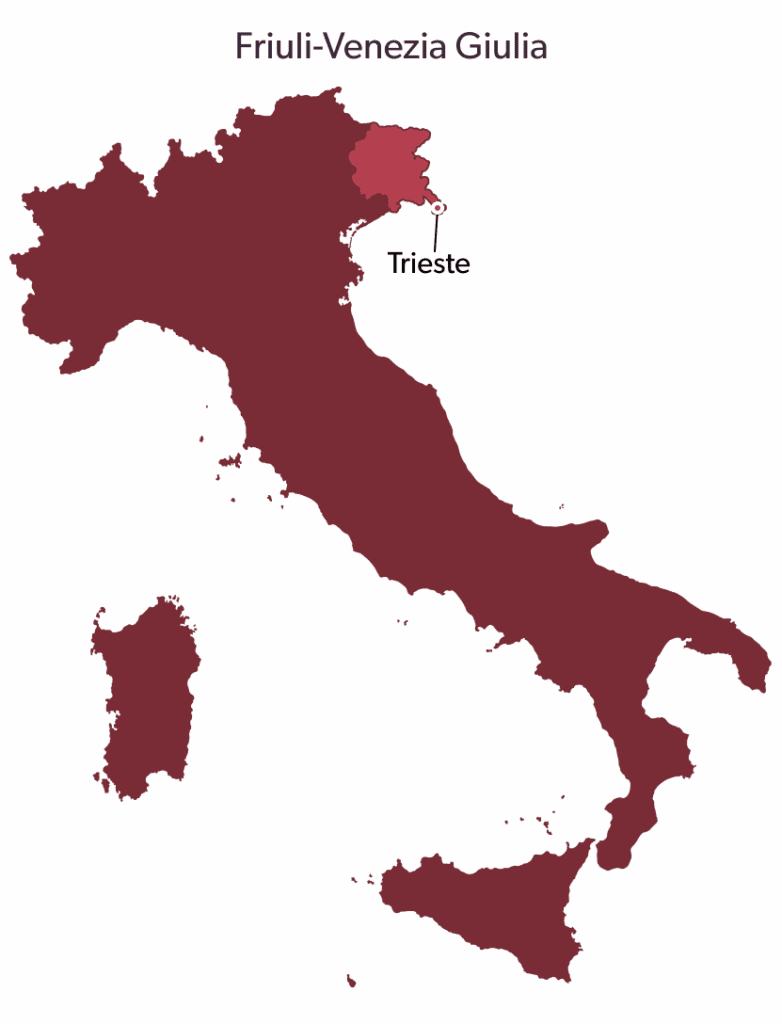- Territoire -
- Vin
Gorizia, Découvrez la ville authentique
Le Prosecco DOC a un lien indissoluble avec la terre. Un lien puissant qui a trouvé un complément idéal dans sa nouvelle expression : Rosé. Les vins sont les deux faces d’une même pièce, comme le Yin et le Yang, comme la lune et le soleil. De la tradition des terres frioulanes aux tables du monde entier.
The province of Gorizia is located in the south-eastern area of Friuli Venezia Giulia, on the border with Slovenia and overlooks the Adriatic Sea. Gorizia offers excellent views with its typical landscapes. It has a rich history with a particular artistic vein thanks to different cultural influences, including Germanic, Slavic and Latin influences.
For the beauty of its buildings, Gorizia was called the “Austrian Nice” by the Habsburg aristocracy. Gorizia is a small and pleasant city, where it’s royal past still lives on in the palaces and beautiful gardens found throughout the city, including the splendid Viatori, also known as the Azalea garden.
Gorizia is also a symbol of the troubled history of the twentieth century in Europe. Formerly a town in the territory of the Austro-Hungarian Empire until it was annexed to Italy in 1918 after WWI, Gorizia has been witness to many dramatic events involving Italy’s eastern border during Fascism and the Second World War.
During WWII the city was split in two parts, with a section of Gorizia being part of the former Yugoslavia. The territory was divided by the so-called “wall of Gorizia”, which was erected in Piazza Transalpina and became one of the symbols of the political-ideological separation between Western and Eastern Europe during the years of the Cold War. The border wall was demolished with the entry of Slovenia into the European Union in 2004 and today the borderline is a symbol of unity between the two nations. Piazza della Transalpina is divided between the municipalities of Gorizia and Nova Gorica, in Slovenia, where the border wall once stood there is now a row of bricks to indicate the border, making it possible to simultaneously be in two different countries at once.
Throughout the city, there are many monuments and places of historical and artistic interest that are worth visiting, some include:
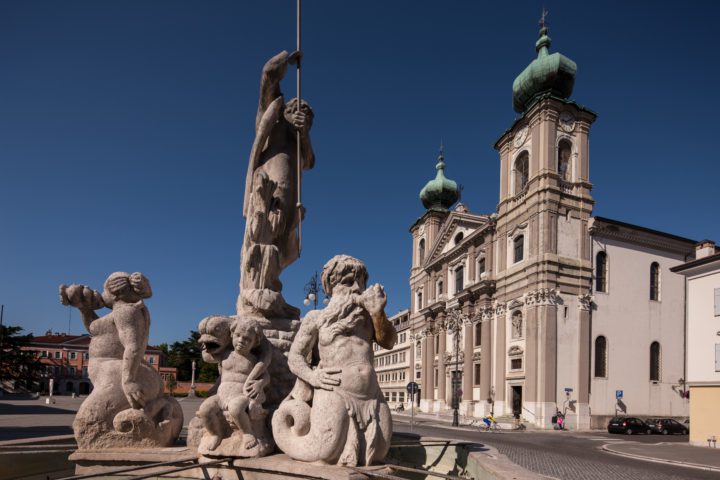
Piazza della Vittoria : La Piazza Vittoria était à l’origine une clairière herbeuse appelée «Travnik» (prairie), qui, dominée par des bâtiments imposants et des boutiques d’artisans, était considérée comme un centre de la vie urbaine depuis le XVIIIe siècle à Gorizia, une grande période de croissance économique de la ville.
Le bâtiment principal qui domine la place est l’église de Sant’Ignazio, imposante structure baroque construite par les jésuites et présente à Gorizia depuis 1615. Au centre de la place se trouvent la fontaine de Neptune et les Tritons, réalisés en 1756 par Marco Chiereghin conçu par Nicolò Pacassi (architecte gorizien très apprécié par des Habsbourg et concepteur du palais de Schönbrunn). De nombreux événements historiques se sont déroulés sur la Piazza Vittoria: le 20 septembre 1938, Benito Mussolini a fait un discours devant le palais préfectoral devant une foule nombreuse de citoyens goriziens, ainsi que le suicide tragique du philosophe gorizien Carlo Michelstaedter, âgé de 23 ans en octobre 1910.
Via Del Rastello : Une des rues les plus pittoresques de la ville est directement reliée à la Piazza Vittoria. Son nom vient de la porte qui, pendant la nuit, au Moyen ge, séparait la citadelle de la campagne. C’est depuis longtemps une rue piétonne caractéristique et pendant la plus grande partie du XXe siècle, c’était le centre économique de Gorizia.
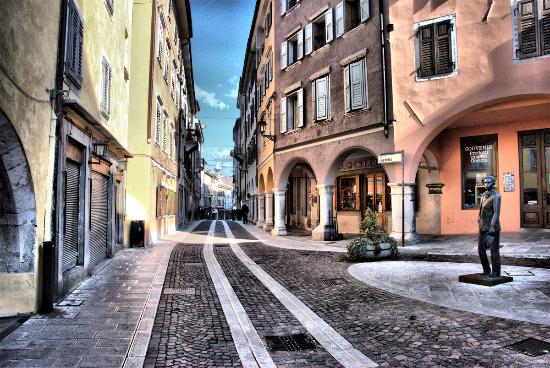
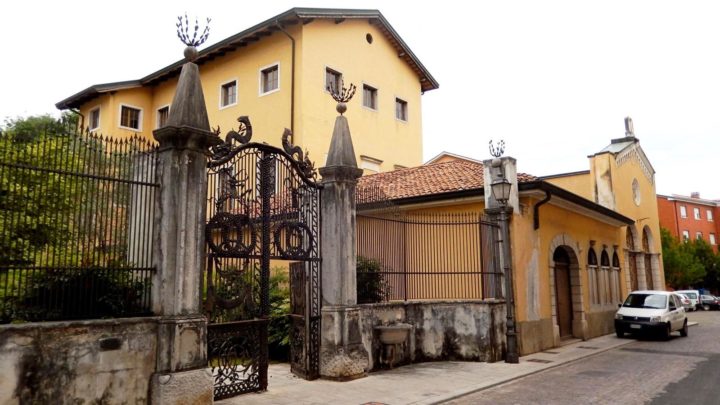
Le Synagogue de Gorizia : Situé dans l’ancien quartier juif de Gorizia, où la communauté juive de Gorizia s’est installée dans les années 1600. La synagogue est le bâtiment le plus représentatif de l’histoire juive de la ville. La synagogue abrite également le musée de la Petite Jérusalem sur l’Isonzo, où il est possible de se renseigner sur la communauté juive de Gorizia, ses traditions et ses liens avec le continent européen.
Château de Gorizia : Datant du 11ème siècle, le château de Gorizia est l’ancien cœur de la ville. Situé sur un colline surplombant la ville, le château offre une vue panoramique spectaculaire sur Gorizia et ses environs.
Son apparence actuelle ne correspond pas exactement à l’originale puisqu’elle a été démolie par les Vénitiens pour des raisons de défense. Aujourd’hui, seules les fondations restent visibles à l’intérieur du tribunal de Lanzi. Le château reflète l’évolution qui s’est produite entre les XIIIe et XVIe siècles avec l’ajout de bâtiments et de structures défensives. Le château a changé de propriétaire plusieurs fois, passant des mains des comtes de Gorizia à l’église d’Aquilée, puis à la dynastie des Habsbourg.
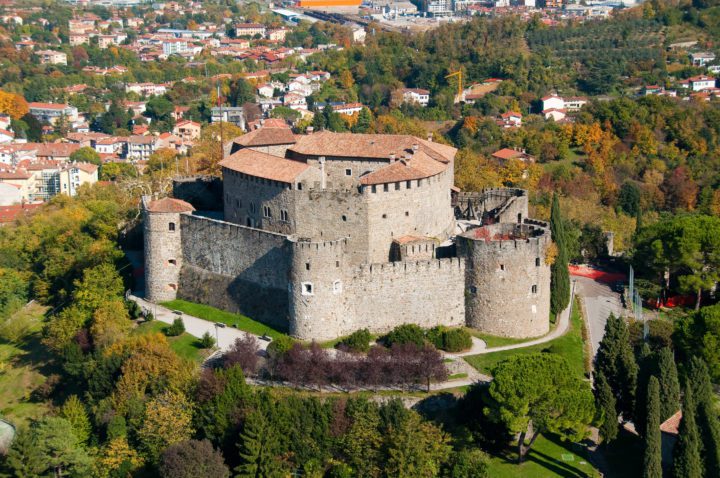
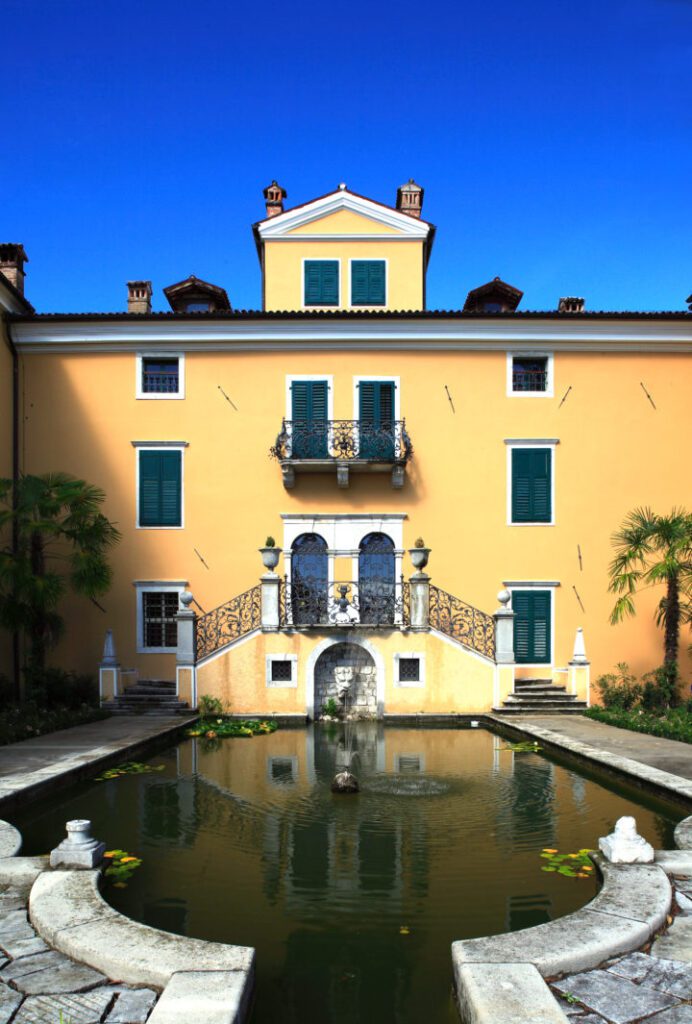
Palazzo Coronini Cronberg : Une maison historique datant de la fin du XVIe siècle. En parcourant les quinze salles qui composent le palais, y compris la salle dans laquelle mourut Charles X de Bourbon, dernier roi de France en 1836, les visiteurs sont transportés dans le temps grâce à l’atmosphère historique des chambres dotées d’un mobilier du XVIIe siècle et décor luxueux.
The coastal stretch is dominated by the magnificent Grado lagoon, an internationally renowned tourist destination, with golden beaches and a suggestive intertwining of canals between islands and islets. There are two protected areas in this pristine environment, ideal habitats for numerous bird species: the Cavanata Valley Nature Reserve and the Isonzo Mouth Nature Reserve, where Camargue horses also live in the wild. The fertile Isonzo plain, famous for producing excellent wines, has large expanses of vineyards, picturesque villages and panoramic views of singular beauty.
Another characteristic landscape is constituted by the Collio, the land of the great Friulian wines: a succession of hills covered by vines and dotted with small villages such as Oslavia, Dolegna del Collio and Cormons.
The testimonies of a troubled past up to more recent times and the coexistence of different cultures are the distinctive elements of the Gorizia area, a unique land to be discovered that unites and encompasses other realities like a mosaic.
No results found.
NULL00
No results found.
NULL00
- Site Web
NULL00
No results found.
NULL00
No results found.
NULL00

